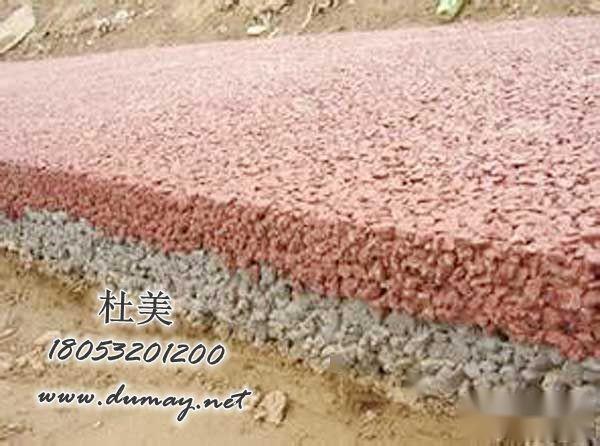Permeable Pavement is a new environmentally friendly and ecological road material that has increasingly attracted attention, especially from the industry. The surfaces of modern cities are mostly covered by reinforced concrete buildings and impermeable pavements. Compared to natural soil, conventional concrete pavements lack the ability to breathe, absorb heat, and permeate rainwater, leading to a series of environmental issues. Consequently, concrete has long been regarded as a culprit in harming nature. However, creating continuous open spaces can establish connections with the natural environment.
As an environmentally load-reducing concrete, Permeable Pavement is an innovative material for improving and restoring the damaged Earth environment, allowing human life to coexist harmoniously with nature and promoting sustainable development.
Permeable Pavement is also known as ecological permeable pavement, permeable concrete, and no-sand concrete,、 which is made by uniformly mixing aggregates, binders, additives, cement, and water to create a pavement. It has higher strength and durability compared to traditional concrete, meeting the mechanical performance, usage functions, and service life requirements; it is harmonious with the natural environment, reduces the load on the Earth and ecological environment, and achieves the recyclable use of non-renewable resources; it has excellent performance, providing a comfortable, pleasant, and convenient living environment for humans.
Permeable Pavement allows rainwater to quickly enter the ground, effectively replenishing groundwater and alleviating the urban heat island effect,
protecting urban natural waterways from damage, thus holding significant environmental value. At the same time, it addresses the problem of water accumulation on conventional pavements, enhancing walking safety and comfort, which is of great importance for improving the living environment.
Permeable concrete retains the characteristics of traditional concrete while overturning its single gray color, presenting a gorgeous and diverse color expression. By using various colors, the ground can blend with buildings and landscapes, creating a warm and harmonious living environment!
Functional Features:
1, High permeability. Permeable Pavement has a porosity of 15%-25%, allowing a permeability rate of 31-52 liters/m·hour, far exceeding the effective rainfall discharge rate under excellent drainage conditions.
2, High load-bearing capacity. According to national testing agencies, the load-bearing capacity of Permeable Pavement can fully meet the standards of C20-C25 concrete, which is higher than that of conventional permeable bricks.
3, Excellent decorative effect. Permeable Pavement has an optimized color ratio plan that can collaborate with designers to achieve the required decorative individuality for different environments and characteristics, which is difficult to accomplish with conventional permeable bricks.
4, Easy maintenance. The concern about pore blockage is unnecessary; the unique permeable paving system can be easily resolved by high-pressure water cleaning.
5, Frost resistance. Permeable paving has a stronger frost resistance than conventional concrete pavements and will not crack due to freeze-thaw cycles because its structure inherently contains larger pores.
6, Durability. The durability and wear resistance of permeable pavement exceed that of asphalt and are close to conventional pavements, avoiding the shortcomings of short service life and uneconomical use often found in conventional permeable bricks.
7, High heat dissipation. The material's low density (15-25% voids) reduces its heat retention capacity, and the unique pore structure allows cooler underground temperatures to transfer to the surface, subsequently lowering the temperature of the entire paved area. These characteristics make the permeable paving system comparable to natural vegetation in terms of heat absorption and storage capabilities.
Applicable Scope
Municipal walkways, garden paths, urban squares, residential communities, parking lots, commercial office buildings, outdoor sports venues, bicycle paths, children's playgrounds (badminton courts, basketball courts, etc.).













